
This is a guest post written by Alisa, human companion to a rescue Shiba Inu named Kuma. Copyright © Alisa and Kuma.
Disclaimer: Pet nutrition is a complicated topic with many grey zones and contradicting information from experts. Even pet nutrition organizations NRC (National Research Council), AAFCO (Association of American Feed Control), and FEDIAF (European Pet Food Industry Federation) all have different guidelines, which disagree on what constitutes a complete and balanced diet. There is no consensus on what guideline is best or “right” for each individual pet. Therefore, the statement “complete and balanced” should be taken with a grain of salt.
This article describes how I source, nutritionally balance, prepare, and store raw dog food for my Shiba Inu. This is part 2 of our raw dog food series. If you have not read part 1, here is why I feed my Shiba Inu a raw dog diet.
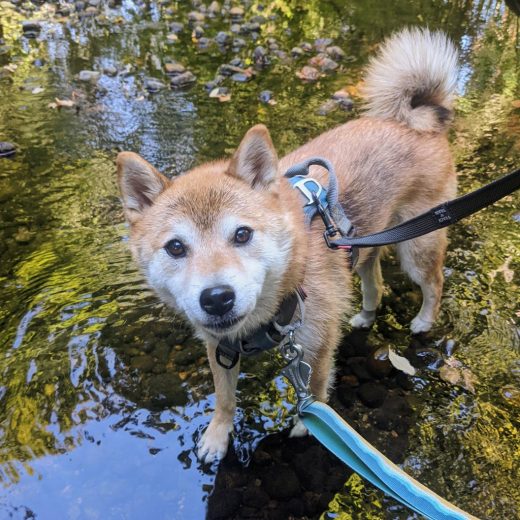
1. Raw Dog Diet – Sourcing
There are many different ways to source raw food for our furry companion. Much of it will depend on what is available where we live, because shipping options for frozen raw food is often limited. Thus to provide a variety of proteins and cuts means putting in the time to source it locally.

Option 1: Specialty Raw Pet Food Store
Raw pet food stores are a cost effective way to source raw food. Some raw pet food producers may have their own storefront to sell directly to consumers. However, most brands wholesale to pet stores that have a freezer section for raw pet food. A typical chain pet store will have a small freezer selection with limited options. Boutique pet stores will typically allocate more store space to raw pet food and offer a larger variety.
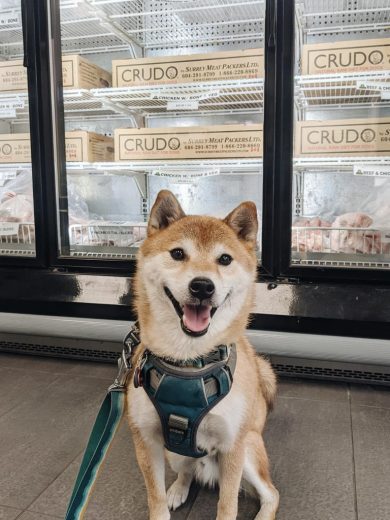
Raw pet food typically comes in pre-packaged portions of ground meat, and bags of offcuts such as animal organs, feet, neck, heads, etc. Some companies offer pre-made blends of meat, bone, and organs, which will help cut down meal prep time. However, it is usually unclear how much of each ingredient is blended together, so I prefer to purchase the ingredients individually.
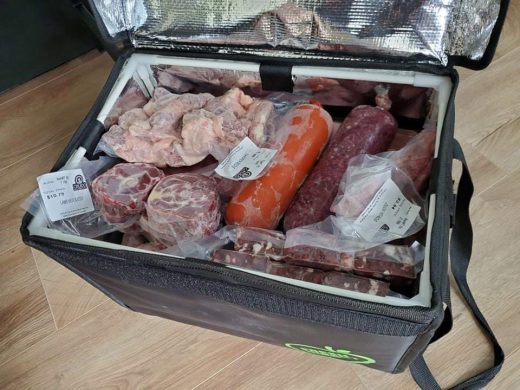
Option 2: Grocery Stores
We can buy human-grade raw food at the grocery store. This generally costs much more because the products are cleaned and packaged well for display. Ethnic grocery stores often carry a larger variety of cuts, especially organ meats not commonly consumed in a Western diet. We live close to a Persian grocer, who carries many lamb and veal cuts as well as organs. Our neighborhood Chinese grocery store carries a great selection of chicken, pork, and seafood.
Option 3: Local Butcher
Butchers are an excellent source of proteins and cuts that are hard to come by. Often, butchers will sell cheap offcuts that are unsuitable for human consumption. We can establish a relationship with our local butcher and have them set aside specific offcuts for pick up on a regular basis. This is a good way to get whole prey.
Option 4: Raising Animals
If we choose to raise our own animals for food, it is important to check with local laws and regulations. The raising and slaughtering of animals is often heavily regulated due to concerns for health and safety, as well as the animals’ well-being. Animals are usually required to be inspected and butchered at a licensed facility. Failure to properly and humanely kill an animal can sometimes lead to felony cruelty charges and arrest.
Option 5: Fishing and Hunting
Finally, we can hunt or fish for whole prey depending on our local laws and regulations. Wild game is usually seasonal, and therefore not a consistently reliable option. It is always good practice to examine wild game for cysts, lesions, and other abnormalities. If we are unsure of its condition, it is best to err on the side of caution and not use it for consumption. More information on wild game can be found here.
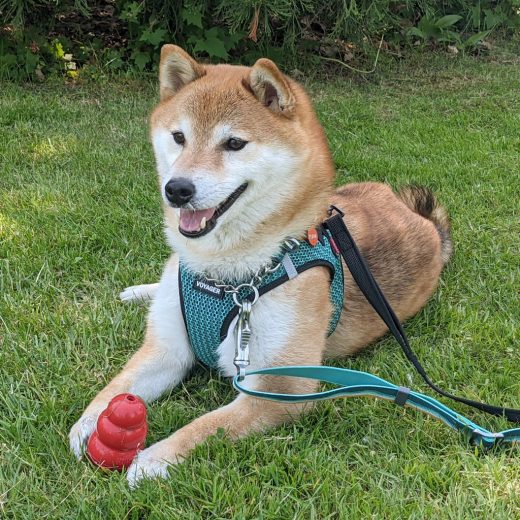
2. Raw Dog Diet – Balancing Nutrition
Raw diets do not generally require extensive supplements or multivitamins to provide all essential nutrients. Appropriately selected whole foods can create a nutritionally complete diet for a dog without resorting to synthetic supplements. A rule of thumb for raw feeding is to offer a variety of different ingredients, including seafood, offal, red meats, and plant matter. The more varied the diet, the less likely that there are missing nutrients.
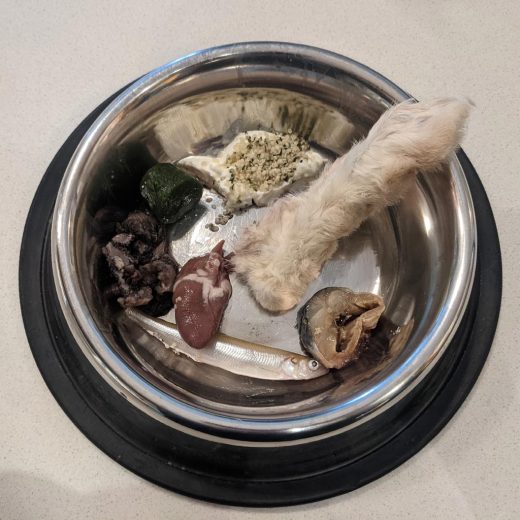
Supplements may be a great option if the dog is allergic to certain ingredients, or if ingredients are not accessible. Dogs may also need supplements for specific needs (eg. medical). Note that dietary supplements on the market are not regulated to the same extent as medication and drugs, and may have questionable effectiveness. It is also easier to overdose on supplements than whole foods, so it is best to contact a veterinarian or nutritionist when in doubt about measuring supplements correctly.
Below are several key nutrients that can be low or missing in some raw food diets:
- Omega 3 fatty acids (ALA, EPA and DHA) are often deficient in raw diets. This is because commercially farmed meats provide high levels of omega 6 and little omega 3. The imbalance can cause inflammation in the body. A good way to include ALA is by adding raw chia seeds or hemp seeds. EPA and DHA are found primarily in fatty fish. Commonly available fatty fish in stores are sardines, mackerel, anchovies, and salmon (more expensive). Kuma gets hemp seeds, as well as mackerel or smelt in his meals everyday. He also loves dried sardines, which I use as training treats because they are small and super stinky!
- Zinc is involved in metabolism, cell replication, and wound healing. Zinc dietary needs can be met by feeding red meats such as beef, lamb, or venison. Excessive levels of zinc can impact the absorption of other dietary minerals, so be careful if using synthetic supplements. Kuma consumes beef and lamb regularly so I do not worry about his zinc levels.
- Manganese is an important part of many enzymes and plays a role in the health and maintenance of bone and cartilage in joints. Manganese is often found in feathers and fur of whole prey. But if that is not an option, blue mussels and green tripe are also good sources of manganese. Kuma gets green tripe in his meals every day, and an occasional rabbit foot with fur.
- Iodine is inadequate from diets that do not consist of whole prey because iodine is found in the thyroid of animals. Whole fatty fish and shellfish provide some iodine but it is not sufficient to meet iodine requirements. Seaweed, such as kelp, have the highest concentration of iodine of all whole food sources. Kelp powder can also be used. Kuma gets kombu kelp blanched and puréed along with kale and spinach. The saltiness of the kelp also makes the purée more palatable.
- Vitamin D is essential for dogs because they do not produce vitamin D when exposed to sunlight like us. Vitamin D is found in oily fish, eggs, and organs. Vitamin D is a fat soluble vitamin which means it can be highly toxic in large amounts, so be careful when using synthetic supplements for vitamin D. There were recalls of commercial pet food due to toxic levels of Vitamin D supplements that caused kidney failure and death.
- Vitamin E is a fat-soluble vitamin that protects cells from damage caused by free radicals. It is the most commonly supplemented vitamin in a raw food diet. This is because protein sources that provide adequate vitamin E are difficult to come by. Furthermore, vitamin E is not easily absorbed and less than half the amount in food is available to the body. Brain and heart are good sources of vitamin E.

3. Raw Dog Diet – Preparing and Storing
Some key items to have are: food scale, cutting board, knife and shears, ice cube trays, stackable Tupperware, deep freezer, masking tape, and large containers for thawing.
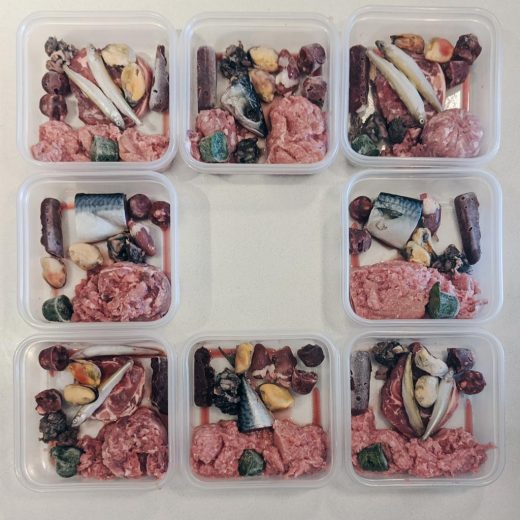
It is essential to have a food scale, cutting board and a knife that can cut through small bones. Use a food scale to measure each portion so that we don’t end up over/under feeding. A good knife is needed for portioning meat. I found it extremely helpful to also have a pair of kitchen shears when working on items such as chicken carcasses. Having a cutting board with grooves will allow fluids to catch in the ridges so we don’t make a mess. Always practice good hygiene by washing all the equipment thoroughly after use.

Raw food can take up a lot of space, so having a separate deep freezer to store it is a good idea. Six weeks worth of raw food for Kuma fills up the small 3.5 cubic meter deep freezer. We also do not want to confuse Kuma’s food with our own because some of his food comes from the grocery store.If the food was freshly caught, or freshly butchered / processed, it is recommended to freeze them for 2-3 weeks before consuming. Storing meat in the freezer at -20°C (-4°F) reduces the temperature to a point that inhibits most bacterial growth. Thaw ingredients in the refrigerator for meal prep and refreeze any leftovers. Individual prepped portions should be moved from the freezer to the fridge the night before so they thaw in time for feeding the next day.
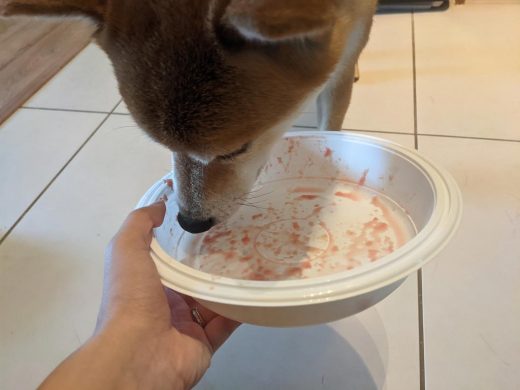
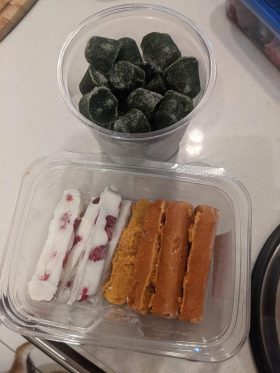
Ice cube trays are great for freezing wet ingredients. Yogurt and canned pumpkin come in large portions that will not stay fresh for long in the fridge once opened. I also blanch vegetables and kelp, and then purée them in the blender before freezing them. Having pre-portioned frozen components will help speed up meal prep time and also reduce food waste. These also make great treats during hot weather.
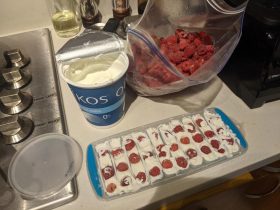
Stackable and freezer-safe containers are the best option for storing the prepped meals. Matching containers will stack well in the freezer and also nest inside each other in the cupboard when not in use. I use masking tape to label the containers with the primary proteins on the lid (T for turkey, L for lamb, etc.). This makes it easier to identify when doing protein rotation.

Visit with Shiba Inu Kuma
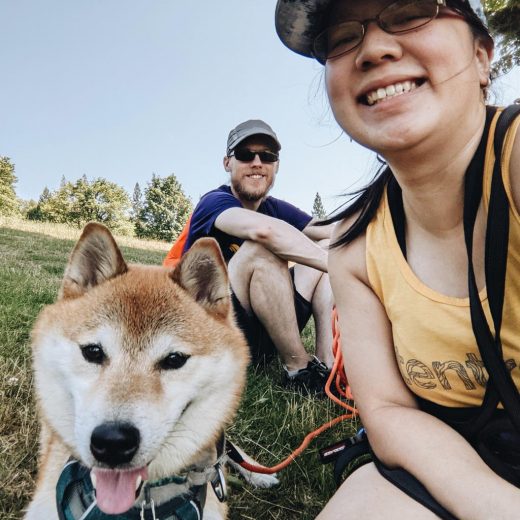
For a new puppy, at what age should I start to feed him raw food? Are there any restrictions?